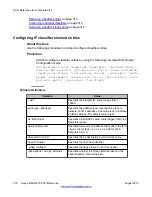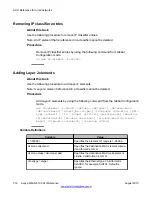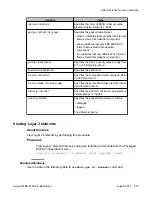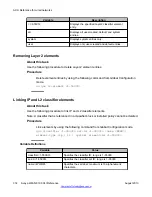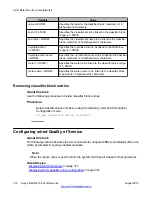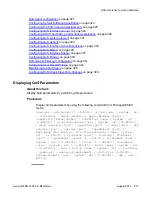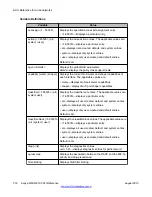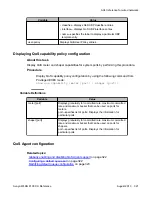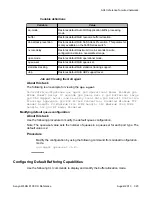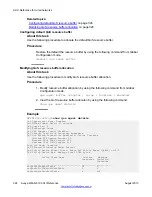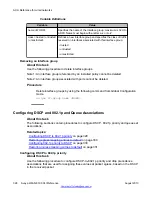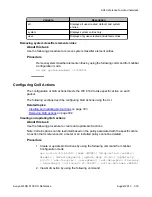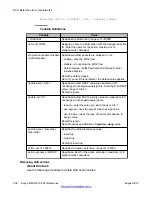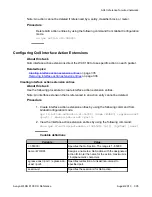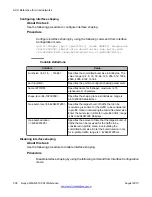
Variable definitions
Variable
Value
aq-mode
Restores default Auto QOS application traffic processing
mode.
buffer
Restores default QoS resource buffer allocation.
dos-attack-prevention
Restores default QoS DoS Attack Prevention. This parameter
is only available on the 5600 Series switch.
nvram-delay
Restores default maximum time in seconds to write
configuration data to a nonvolatile storage.
oper-mode
Restores default QoS operational mode.
queue-set
Restores default QoS queue set.
statistics-tracking
Restores default QoS statistics tracking support.
ubp
Restores default QoS UBP support level.
Job aid: Viewing the QoS agent
About this task
The following is an example for viewing the
qos agent
5530-24TFD(config)#show qos agent QoS Operational Mode: Enabled QoS
NVRam Commit Delay: 10 seconds QoS Queue Set: 2 QoS Buffering: Large
QoS UBP Support Level: Low Security Local Data QoS Default Statistics
Tracking: Aggregate QoS DOS Attack Prevention: Disabled Minimum TCP
Header Length: 20 Maximum IPv4 ICMP Length: 512 Maximum IPv6 ICMP
Length: 512 QoS NT mode: Disabled
Modifying default queue configuration
About this task
Use the following procedure to modify the default queue configuration.
Note: The queue-set value sets the number of queues in a queue set for each port type. The
default value is 2.
Procedure
Modify the configuration by using the following command from Global Configuration
mode.
qos agent queue-set <1-8>
Configuring Default Buffering Capabilities
Use the following CLI commands to display and modify the buffer allocation mode.
ACLI reference for wired networks
Avaya WLAN 8100 CLI Reference
August 2013 323


